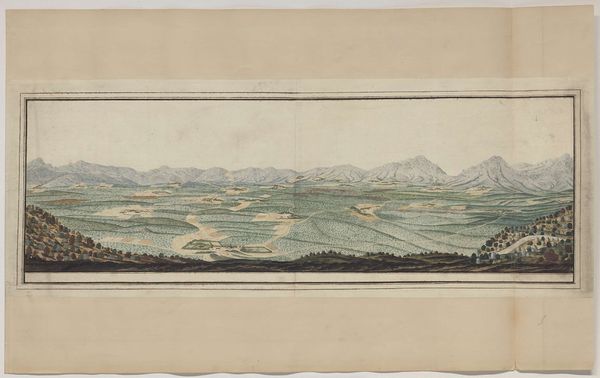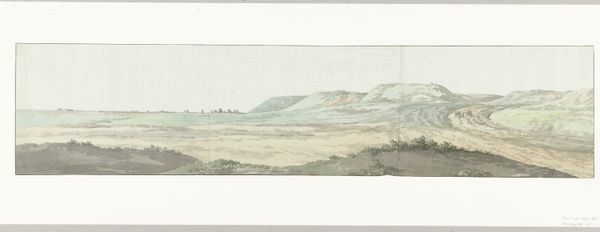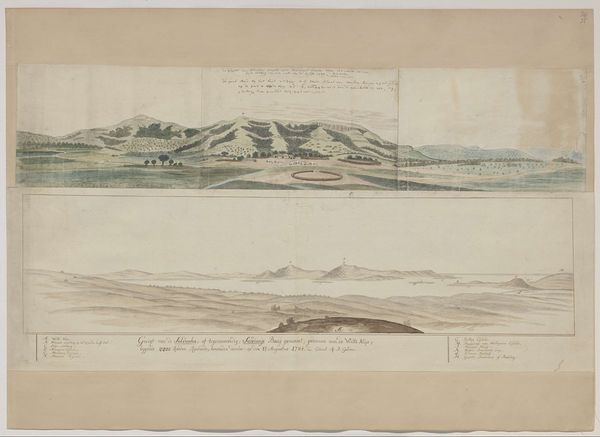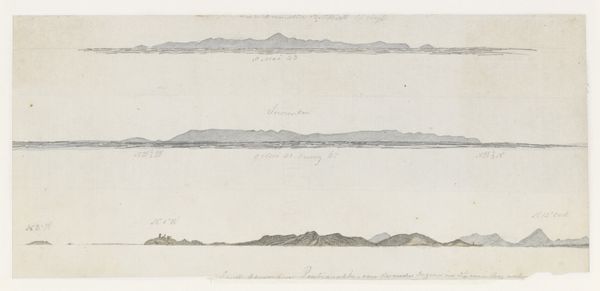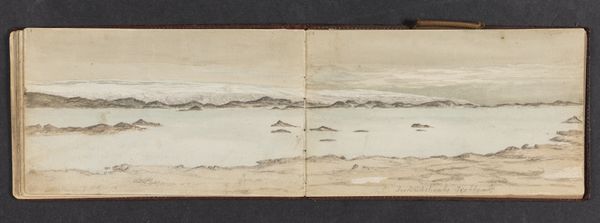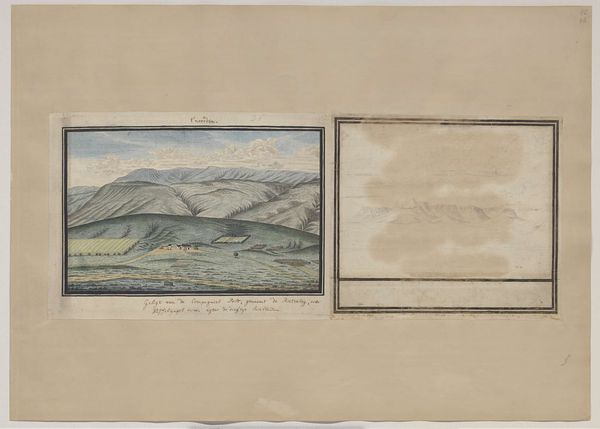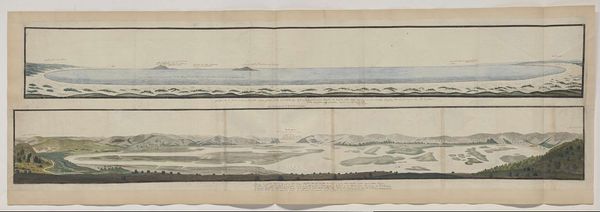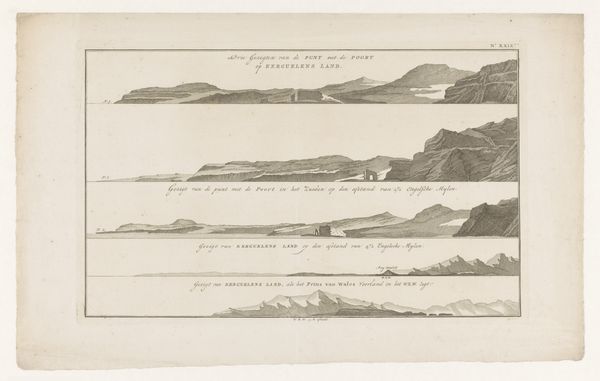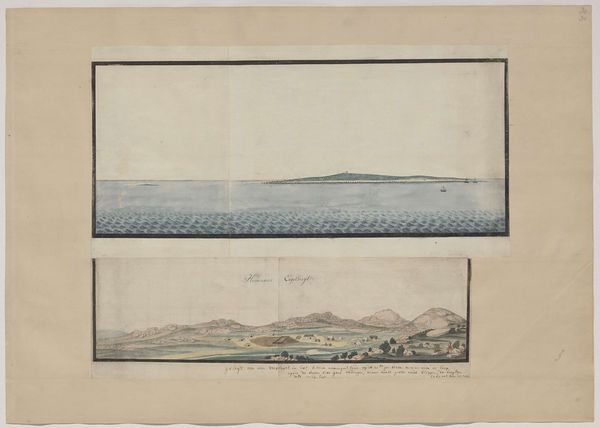
View of the mouth of the Orange River from the west-south-west Possibly 1779 - 1781
0:00
0:00
drawing, ink
#
drawing
#
landscape
#
ink
#
realism
Dimensions: height 292 mm, width 2614 mm, height 250 mm, width 2590 mm
Copyright: Rijks Museum: Open Domain
Curator: Here we have Robert Jacob Gordon's "View of the mouth of the Orange River from the west-south-west," likely created between 1779 and 1781. It's an ink drawing presenting a panoramic landscape. Editor: It’s strikingly bleak. A near monochrome rendering evokes such a profound feeling of desolation; the lack of color suggests barrenness, maybe even hopelessness. Curator: I’m fascinated by the way Gordon structures the composition. He separates the drawing into distinct registers, each presenting a different vantage point on the landscape. The use of line and perspective offers a rational and objective representation, characteristic of the Enlightenment's scientific impulse. Editor: Rational, perhaps, but it’s a vision complicit in colonial exploitation. Remember that Gordon was a military man working for the Dutch East India Company. This isn't an innocent landscape; it’s a survey, a claim staked on Indigenous land, paving the way for resource extraction and domination. The starkness you call objective, I see as the cold gaze of the colonizer. Curator: You raise a crucial point about the historical context. Still, it’s undeniable that the technique is remarkable. The precision in the linework and the rendering of spatial depth... these are not just tools of observation, but demonstrations of skill. Look how he manipulates the line density to create depth in the image; in particular, the mountains ripple on the bottom plane. Editor: Skill employed in the service of empire. Think about the communities displaced and disrupted by colonial mapping and resource exploitation, erasure facilitated by seemingly "objective" depictions like this. The beauty is tainted by the ugliness of its purpose. We must question the motivations behind even the most technically proficient art. Curator: Certainly, the drawing compels us to grapple with complicated ethical questions, forcing the viewer to look beyond conventional categories like beauty. But even knowing all of that, the deliberate rendering is superb. Editor: Precisely. We’re left with the conundrum: the drawing invites aesthetic consideration while demanding that we confront its troubling colonial legacy.
Comments
No comments
Be the first to comment and join the conversation on the ultimate creative platform.
